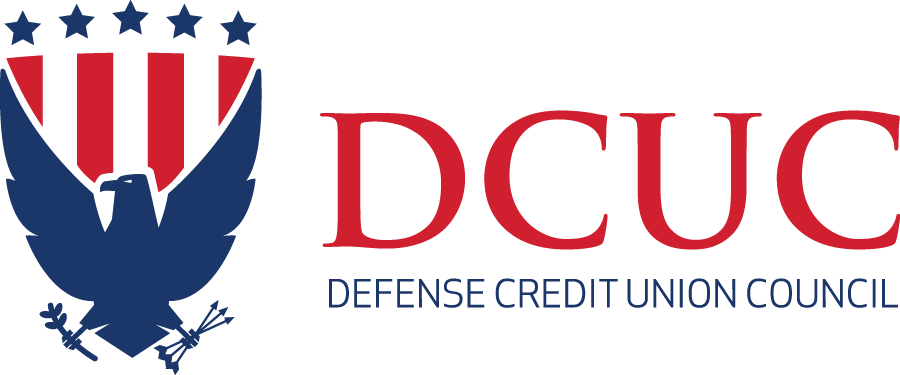The Washington Examiner recently published an editorial arguing that credit unions have strayed from their original mission and no longer deserve their federal tax exemption. The piece claimed credit unions use a $3 billion “tax subsidy” to expand like banks and serve wealthier customers rather than those of modest means. However, this view overlooks the critical role that credit unions—especially defense credit unions serving U.S. military families—continue to play in communities. Credit unions remain not-for-profit cooperatives dedicated to their members. They return financial benefits to ordinary people, focus on underserved populations, and operate fundamentally differently from banks. Here’s why the credit union tax status is still justified and benefits 140 million Americans.
Defense credit unions serve military families in underserved areas
Defense credit unions, in particular, exemplify why credit unions exist. On many military bases—especially in remote or overseas locations—a defense credit union is often the only readily available financial institution for service members and their families. These credit unions provide safe, affordable banking services in places profit-driven banks might be hesitant to go. This presence underscores how defense credit unions fill critical financial service gaps for military communities that would otherwise be underserved.
Importantly, defense credit unions earned their on-base role by providing superior service. Military leaders have long noted that credit unions help troops avoid exorbitant fees and predatory lenders. Indeed, base commanders have asked credit unions to stay to counter the high costs and poor service from other institutions—and because they are member-owned not-for-profits, these credit unions keep loan rates low and respond flexibly to challenges like deployments, directly improving servicemembers’ financial readiness. The Pentagon itself acknowledges this value by allowing credit unions to operate on installations at nominal rent as part of their community service mission. Simply put, defense credit unions are a lifeline for military families, ensuring our men and women in uniform have access to fair financial services wherever duty takes them.
Protecting service members from predatory lenders: Vice President Vance’s story
The value of defense credit unions is perhaps best illustrated by a story recently shared by Vice President J.D. Vance (a Marine Corps veteran). Vance recalled how a credit union saved him from making a terrible financial mistake. As a 19-year-old Marine, he was about to finance a used car at a predatory 21% interest rate. Fortunately, a Marine gunnery sergeant intervened and told him to “go to Navy Federal Credit Union and get a better deal,” advice that Vance says, “saved me from . . . a terrible mistake”.
Vance’s story is not unique. Predatory lenders frequently swarm around military communities to target young service members with outrageously priced loans. Defense credit unions act as a bulwark against these practices by offering lower-cost alternatives and trustworthy financial education. Vance’s experience shows the “credit union difference” in action: because credit unions don’t exist to maximize profit, they prioritize their members’ financial well-being. Defense CUs offer fair loans and counseling to help service members avoid debt traps, sparing countless military families from exploitation. Credit unions' not-for-profit status is what enables them to offer better rates and be the trusted partner at life’s most critical moments for members who might have no other safe options.
Tax exemption returns benefits to members and communities
Critics deride the credit union tax exemption as a “subsidy,” but in practice it’s an investment that yields huge returns for the public. By design, credit unions reinvest their earnings into member benefits—higher savings yields, lower loan rates, and affordable services—instead of paying dividends to outside shareholders. The consumer gains from this model far exceed the taxes forgone. One analysis found that credit unions deliver up to $35 billion in direct financial benefits to members each year, versus roughly $2.8–$3 billion in would-be taxes. That’s an approximate $10-to-$1 return in value to consumers for every $1 of tax not collected—a bargain by any measure.
Equally important, credit unions use their tax status to serve low-income and underserved communities. Over 2,450 credit unions (more than half of all in the U.S.) are officially designated as serving predominantly low-income memberships. These institutions devote resources to small-dollar loans, credit-building programs, and financial education in neighborhoods where big banks have long since closed their doors. The Washington Examiner editorial pointed to one affluent suburb to suggest credit unions have abandoned the poor, but that isolated example ignores the broader reality. Nationwide, credit unions still fulfill the mission they were chartered for—helping “people of small means” who are often overlooked by for-profit banks. If the tax exemption were eliminated, many programs for low-income members would be scaled back, and credit unions might have to raise rates and fees, hurting the very people Congress intended to help.
Credit unions are not banks: Cooperative structure and member-focused mission
It’s true that modern credit unions offer many of the same services as banks, but their structure and purpose are fundamentally different. Every credit union is a member-owned cooperative governed by a volunteer board of directors. They operate on a not-for-profit basis, meaning a credit union’s priority is the financial well-being of its member-owners rather than maximizing profit. Unlike a commercial bank, which must enrich its shareholders, a credit union returns any surplus earnings back to its members through lower fees, higher savings yields, and lower loan rates. This cooperative model is the reason credit unions receive a tax exemption—they function as community-owned financial utilities, not profit-making corporations.
In practice, the member-first mission yields consumer-friendly results that banks rarely match. Credit union members typically pay fewer and lower fees and enjoy better loan rates compared to bank customers. Many credit unions also provide financial literacy education, free counseling, and special assistance for members facing hardships—services often beyond the scope of for-profit institutions. Critics argue that today’s large credit unions are “just like banks,” but even the biggest credit unions (with tens of billions in assets) remain accountable only to their members, not Wall Street. They cannot sell stock or pay dividends to outside investors, so their focus stays on delivering value to the people who use their services. In short, even as credit unions grow, they retain a unique consumer-centric DNA that sets them apart from traditional banks.
Conclusion
Credit unions—especially defense credit unions—have not abandoned their mission. They continue to protect the financial well-being of Americans, from soldiers on the front lines to families in low-income neighborhoods. The federal tax exemption for credit unions is not a corporate giveaway; it recognizes their unique role as member-owned, community-focused lenders. Eliminating that tax status would undercut institutions that shield consumers from predatory lending and serve communities banks often ignore. Rather than penalizing credit unions for their success, policymakers should recognize that their growth simply means more people and communities are being served, and evidence shows credit unions still earn their tax exemption by delivering immense value to their members. In an era of bank consolidation and rising fees, credit unions remain a people-centric alternative. Preserving their tax status will allow these cooperatives to continue fulfilling their vital mission.








